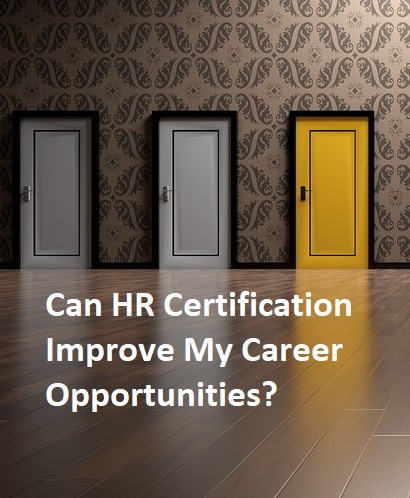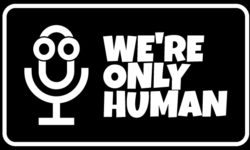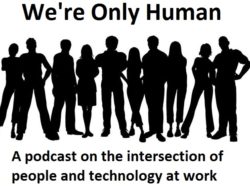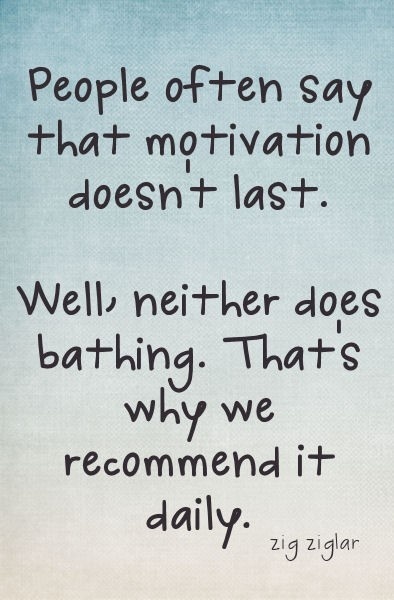Among all of the opportunities that HR leaders have, I believe that one of the most valuable is puncturing the CEO bubble by acting in a strategic advisor capacity. As I wrote some time ago, 76% of CEOs value their relationship with HR. This is because we exist outside the normal flow of business to some extent. This role as a trusted advisor is one that can, and should, be highly strategic.
HR’s History
Does this list sound familiar?
- No
- We can’t do that
- That would be risky
- What if we get sued
- We’ve never done it that way
- I don’t think that will work
 That is my perception of HR as it has historically been carried out. For a wide variety of reasons, the HR population has become the “no” police, preventing virtually any opportunity for creativity and innovation.
That is my perception of HR as it has historically been carried out. For a wide variety of reasons, the HR population has become the “no” police, preventing virtually any opportunity for creativity and innovation.
Instead of focusing on excuses or reasons you can't make something happen, keep searching for ways to do it. Look for opportunities, not limitations. There are already enough people in the world who are ready and willing to tell you how something can't be accomplished. Let's work on cultivating more people that look for ways you can be successful.
We often see opportunities as binary, yes/no decisions. As an example: we can either change to a new insurance provider or we can stop providing insurance to our employees and let them all die of horrible diseases before the week is over with.
The point is the person offering these options knows that offering one really great option and one really poor option is going to force the manager to choose. However, the good manager will turn it back on the employee with a response of “none of the above.â€
If you want to do it right, here's the game plan: instead of settling for two less-than-ideal options, ask for more. Push the person to give you three, four, or five options; ask for at least one more viable idea to level the playing field. Ask why they settled on offering just two. Don't let them get away with trying to push their own agenda if there is a better option still available.
Again, this illustration is centered around asking your staff to do more than the bare minimum. Don't let them assume something can't be done. Don't let them get away with listing reasons/excuses for why something isn't possible. Ask them to go further and look at “how we can†options, even if they are a bit far-fetched. You never know when one of those ideas could fit perfectly.
If you want to be seen as a trusted advisor, a connector, and a positive force for change, this is how you do it. You don’t accomplish that by saying “No” to everything that is proposed. There are good options that don’t involve the sudden demise of your entire company–you just need to tune your risk meter and get better at predicting the future.
Remember: look for answers to how we can, not why we can’t.
CEO Influence in Action
In one of my previous roles, I reported directly to the CEO of the organization. This was a two-way street in terms of value. I received up-to-date information on business pursuits and opportunities on the horizon, and I was able to offer insights, input, and advice around how to approach those areas.
There were times that my advice was received, processed, and not followed. That is painful for some to cope with, but it’s the nature of the game. That’s why the other person is the CEO–they get to call the shots.
However, there were plenty of times that the advice was heeded, and the business and people benefited from it. At least I knew I had an open ear and could get my side of the story heard.
Another company I worked in was not quite so… positive. The CEO was unplugged from the organization emotionally and mentally. The entire staff knew it, and it didn’t exactly lead to a culture that I would be proud of. I was a layer removed from the CEO but my boss was not of the strategic mindset. We were seen as a group of HR paper-pushers with a rubber stamp ready for any idea or innovation to arise so we could put a big, fat “NO” on it. The company was eventually acquired and the entire staff laid off, and all of the talent problems that the leadership had been ignoring became someone else’s problem.
Taking Advantage of the Situation
One of the hardest things about the close nature of this relationship is the eventual requirement to compete with your own interests. There are times that you will have to put forth ideas and concepts that are counter to your own needs. Being able to distance yourself as an objective party and provide inputs without becoming entangled in the emotional red tape is difficult, but necessary.
This is also where you can forge some of the strongest bonds with your company’s leadership. If everything is going fine, nobody is surprised when you have your stuff together. But when things are hard and times are lean or challenges arise, that is when you have the best opportunity to demonstrate your competency and level-headed approach. When everyone else is flailing about, you have to be the rock that others can cling to. Not physically–that would be weird. But you get the picture.
Litmus Test for Your CEO’s HR Outlook
I have a quick test you can use to determine your CEO’s outlook on the value of HR. Does he/she see you as an administrative burden or a necessary evil, or are you seen as a value-added strategic partner that is indispensable?
This isn’t foolproof, but I have seen it play out many times and it is fairly accurate. Do a quick calculation for me: look at your ratio of employees to HR pros. This tells you how valuable your leaders think HR is. Consider these two examples:
- A friend recently contacted me and we were discussing her company’s HR structure. They budget for one HR pro per thousand employees. She spends all day doing paperwork and has not planned for future growth needs in more than two years.
- Another friend caught me up on her company’s strategy in the midst of explosive growth. The company had a ratio of 1:40. The firm is doing better than ever and the HR team is continuously implementing new programs and targeting strategic opportunities for improving talent acquisition, leadership development, and more.
There isn’t a hard number, but hopefully these examples give you a better idea of where you stand. HR can be strategic or tactical, but strategy is where the true business value comes in.
While Very Personal, the Relationship is also Strategic
Some of the ways I have seen this HR advisory relationship/role play out beyond simple business transactions:
- Informal coach: In terms of feedback, HR takes on the role of informal executive coach to the CEO. They will provide input on things that might not be at the forefront of the CEO's thoughts and help them to get their message across in a way that is “comfortable†for the parties involved.
- “Safe†performance improvement feedback: In cases where critical feedback might be necessary, the HR person might have to provide “safe†performance feedback to the executive. In this context, “safe†means direct, private, and confidential. The advice is provided directly to the CEO, it's in a private location, and the feedback is confidential and will not be repeated.
- Personal touch: The one that I've seen more of is what my friend likes to call “the office spouse.†I liken it to my relationship with my wife in that when we go somewhere, I look at her helplessly and say, “Who is that guy's wife again?†and “What did you say happened to their son?†She has those minor details all memorized. Same relationship at work: the CEO expects the HR professional to have the staff information on a personal level close at hand, among other things. In addition, HR acts as a representative of the staff. The CEO can also ask (this ties back in with the two points above) how staff will receive/comprehend an announcement about upcoming changes, whether good or bad.
Not Just Problems: Offer Solutions, Too
“I don't like going to HR meetings. They are always about problems, not solutions.â€
I heard that comment at a SHRM conference once, and it's stuck with me ever since. There is nothing quite like having to sit in front of your CEO and tell them about some problem that is coming at you like a freight train. There are two parts to doing this the right way that will help diminish the perception above.
#1-Offer solutions, too
It may sound simple, but when you come to the meeting with a problem, bring two or more solutions with you as well. Don't feel helpless or powerless. You are the person with the most in-depth information about the issue so far, and it's your responsibility to take that information and turn it into a potential resolution.
That saying we explored above? It’s a saying that I always repeat whenever I'm faced with a tough decision:
Tell me how we can, not why we can't.
#2-Be proactive
So you're sitting there thinking, “Huh, he must be talking to someone else. I don't have any big problems that I have to share with our leadership at this point.â€
No, I'm talking to you, too! You just have a different action. It's time to be proactive. Start looking for ways you can cut costs, streamline your functions, save time for managers, etc. Look for some solutions to age-old problems, not just new ones. Not sure where to start? Ask some of your managers what their biggest pain points are with regard to the HR or recruiting processes. Ask your senior leaders what their biggest concerns are at a corporate level. Then take that information and use it.
Want to know the fastest, easiest way to prove the value of the HR department? Solve a problem that plagues the management team. Yes, it seems simple, but it is often overlooked because HR tends to exist in its own little “bubble†and never takes the time to actually find out what the business needs are from the HR function.
Then take the time to communicate what you've found in the way of solutions to current problems.
Pretty soon your managers will be saying, “I am looking forward to the next HR meeting to see what they have come up with this time.†Then ask for a raise. You deserve it. :-)
What are your thoughts on this relationship? Is it valued at your company? What has been your experience?Â
 HR certification questions are often seen as pretty binary: either I get one or I don’t. But in reality there’s a lot of nuance to the decision. Should I get an HR degree or an HR certification? Will this help my career? Can it make me more competitive? How much money can I make?
HR certification questions are often seen as pretty binary: either I get one or I don’t. But in reality there’s a lot of nuance to the decision. Should I get an HR degree or an HR certification? Will this help my career? Can it make me more competitive? How much money can I make? This coming year, my wish for you is that you become more of a troublemaker in your business.
This coming year, my wish for you is that you become more of a troublemaker in your business. The 2016 HR Technology Conference had a new feature: the
The 2016 HR Technology Conference had a new feature: the  That is my perception of HR as it has historically been carried out. For a wide variety of reasons, the HR population has become the “no” police, preventing virtually any opportunity for creativity and
That is my perception of HR as it has historically been carried out. For a wide variety of reasons, the HR population has become the “no” police, preventing virtually any opportunity for creativity and  If it sounds silly to you to see it spelled out like that, I’d have to agree. Learning about this stuff isn’t a one-time thing. It’s like the great Zig always said: People often say that motivation doesn’t last. Well, neither does bathing. That’s why we recommend it daily.
If it sounds silly to you to see it spelled out like that, I’d have to agree. Learning about this stuff isn’t a one-time thing. It’s like the great Zig always said: People often say that motivation doesn’t last. Well, neither does bathing. That’s why we recommend it daily.